Mechanical Riveting: Different types of rivet
A rivet is a type of mechanical fastener used to permanently join two or more materials together. It consists of a cylindrical shaft with a head on one end and a tail on the other. To install a rivet, the tail is inserted into a pre-drilled hole, and the head is then deformed by a tool called a rivet gun or hammer, which creates a bulge at the end of the tail and holds the materials firmly together.
Rivets are commonly made of materials such as steel, aluminum, copper, or brass, and they are used in a wide range of applications, including construction, aircraft, automobiles, and shipbuilding. They are particularly useful in situations where other types of fasteners, such as screws or nails, may not be strong enough to hold the materials together or may cause damage to the materials being joined.
This processing method is very common in sheet metal Fabrication and is an efficient and time-honored process.
Working Principle
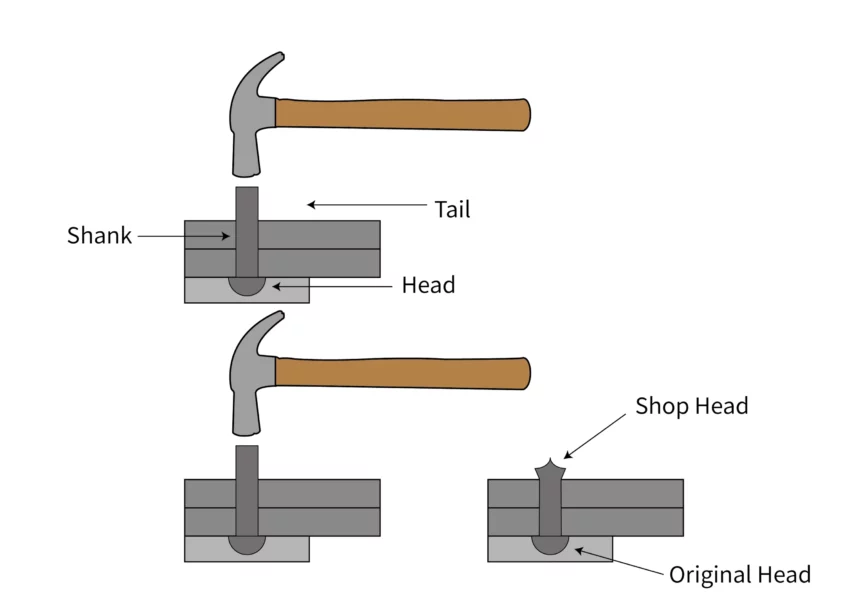
The working principle of riveting is based on the deformation of the material being joined to create a strong and permanent connection. When a rivet is installed, the tail end of the rivet is inserted through a pre-drilled hole in the materials to be joined. The head of the rivet is held in place on one side of the materials, while the tail end is deformed on the other side.
The deformation of the tail end of the rivet is typically achieved through the use of a tool called a rivet gun or hammer. The gun or hammer applies force to the tail end of the rivet, causing it to expand and deform against the material being joined. This deformation creates a permanent connection that is strong and durable.
Working Process of Riveting
The working process of riveting typically involves the following steps:
Preparation
The materials to be joined are first prepared by drilling a hole through them at the point where they need to be joined. The diameter of the hole is typically slightly smaller than the diameter of the rivet.
Insertion
The rivet is then inserted through the hole, with the head of the rivet on one side of the materials and the tail on the other side.
Deformation
A tool such as a rivet gun or hammer is then used to deform the tail end of the rivet. The gun or hammer applies force to the tail end of the rivet, causing it to expand and deform against the material being joined. This deformation creates a permanent connection that is strong and durable.
Finishing
Once the rivet has been deformed, any excess material from the tail end of the rivet is typically trimmed off, and the joint is inspected to ensure that it has been properly formed.
Different Types of Rivet
There are eight widely used types of rivets, which include:
Blind rivets (also known as hollow or pop rivets)
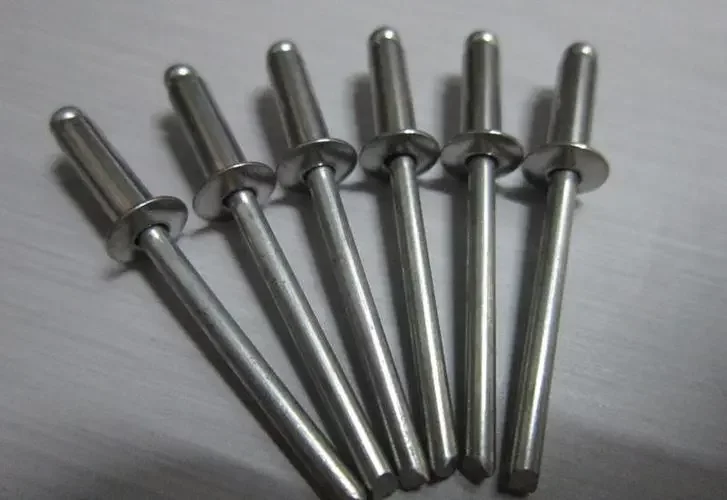
Blind rivets are employed in scenarios where it’s not feasible to have a clear view of the opposite end of a connection. This rapid riveting technique finds application across diverse industries, including aerospace, shipbuilding, and electronics.
Drive rivets
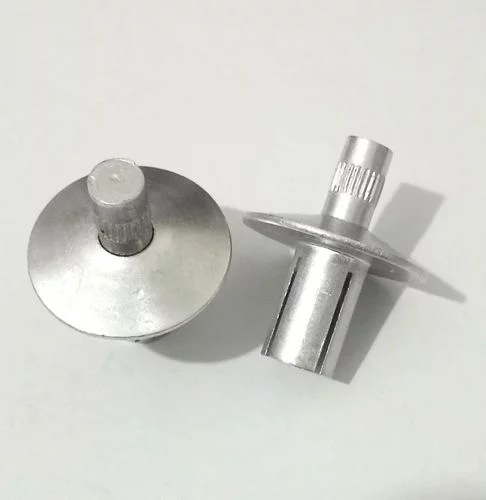
The short mandrel blind rivet variety features a mandrel that extends from its head and is driven into place using a hammer, resulting in the flaring of the end that was inserted into the hole.
Flush rivets
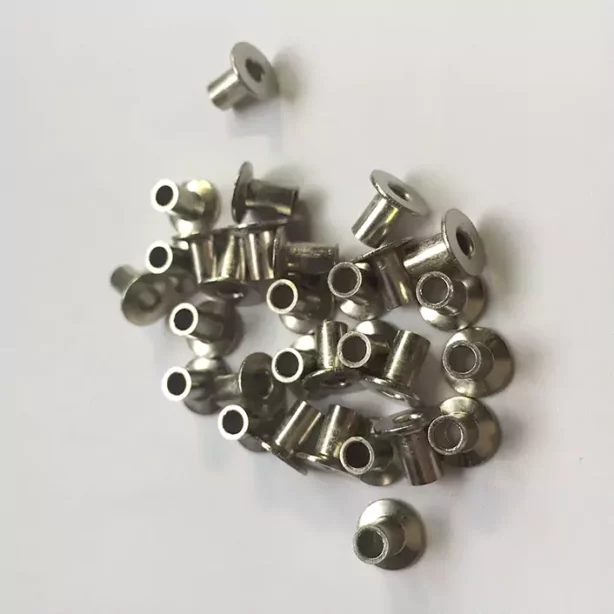
Countersunk rivets, also known as flush rivets, employ a countersunk head and hole to enhance the appearance of external surfaces and eliminate aerodynamic drag. They are typically used in applications where aesthetics and performance are critical.
Friction-lock rivet
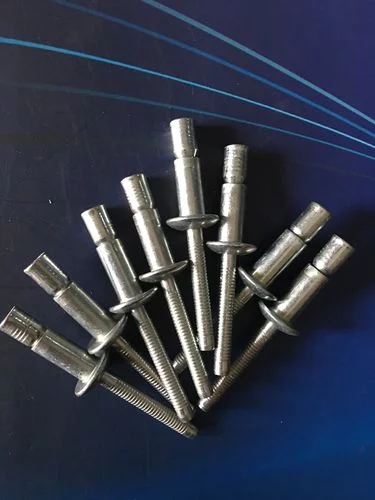
The initial type of blind rivets widely utilized in aerospace applications are designed to resemble an expanding bolt and are available in either dome-shaped or countersunk versions.
Oscar rivets
Oscar rivets are comparable to blind rivets in that they possess splits along their hollow shafts. These splits are usually arranged in sets of three and cause the shaft to bend and flare outward as the mandrel is drawn into the rivet. This flaring action results in a broad surface area, which mitigates the possibility of the rivet being pulled out.
Self-piercing rivets
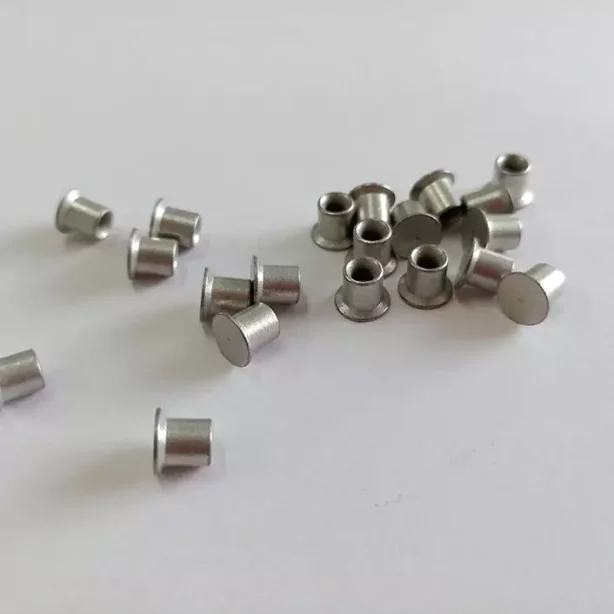
Self-piercing rivets feature a chamfered point at the end, eliminating the need for pre-drilled or punched holes in the materials to be joined. These rivets penetrate the top sheet of material, but only partially pierce the bottom sheet, forming a joint impervious to water or gas.
Solid rivets (also known as round-head rivets)
This technique goes back to the Bronze Age, making this one of the oldest and also one of the most reliable types of fasteners.
Structural steel rivets
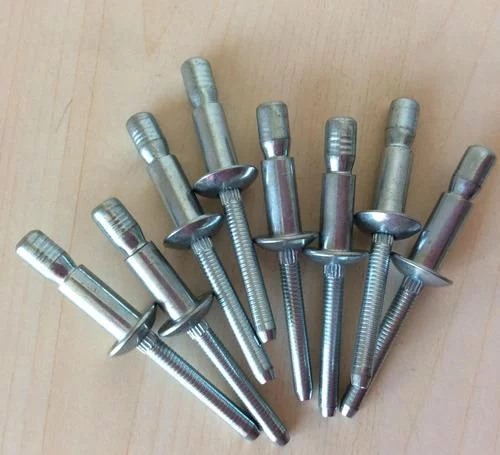
The use of high-strength bolts has become prevalent in joining structural steels, superseding the employment of this type of rivet, which previously was commonly used. The replacement of rivets with bolts has been attributed to the ease of installation and tightening of bolts, which does not demand skilled workers.
What materials are used for rivets?
The material of a rivet plays a crucial role in determining the strength, corrosion resistance, and overall effectiveness of the joint created by the rivet. The selection of rivet material should be based on the specific application requirements. When using steel rivets for instance, it’s important to consider the strength of the rivet material to ensure that it can withstand the loads and forces that the joint will be subjected to. While steel rivets are known for their strength, aluminum, and stainless-steel solid rivets are preferred for their superior corrosion resistance.
Aluminium
Aluminum, when combined with magnesium, becomes a lightweight material that is highly durable and corrosion-resistant when used with a compatible material. However, pure aluminum rivets lack the necessary strength for use in structural components, thus necessitating the addition of alloying elements if required for such purposes.
The majority of rivets utilized in aircraft construction feature an aluminum base. In this application, a countersunk head is ideal due to the absence of protrusions above external surfaces, which reduces aerodynamic drag. As a result, aluminum countersunk rivets, or flush rivets, are also employed in the automotive industry. Additionally, aluminum is a popular choice for HVACs that utilize rivets, whether using a dome-shaped head or flush rivet.
Brass
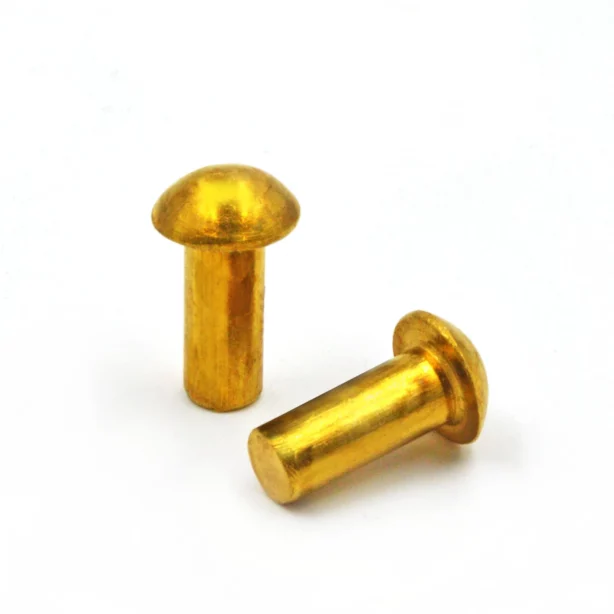
Brass rivets for metal possess malleability, high strength, and low friction, making them a preferred option over welding. Unlike welding, brass rivets do not generate sparks, making them a safer alternative. Due to their ability to create gas-tight joints, brass rivets are particularly suitable for gas appliances, and thus, a common choice for this application.
Copper
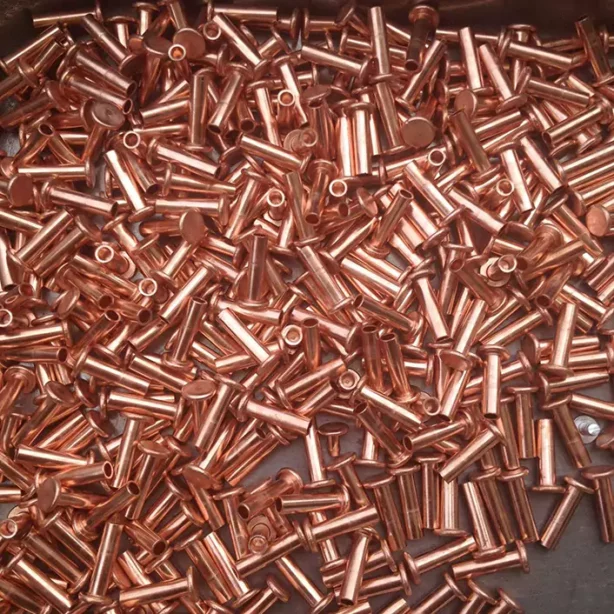
Copper is known for its ductility, high strength, and decorative appeal. In addition to this, copper rivets for metal are well-suited for electrical appliances as they are excellent conductors of both electricity and heat.
Copper nickel
Copper-nickel rivets typically consist of 80% copper and 20% nickel, providing them with excellent resistance to corrosion, stress corrosion, and high temperatures. Due to these properties, copper-nickel rivets are frequently employed in shipbuilding and in appliances that operate in corrosive environments.
Steel
High-carbon steel rivets are known for their good tensile strength, hardness, durability, and ability to withstand wear. However, their moldability decreases, and they require more material. On the other hand, low-carbon steel is more suited to fit well in its application, despite its lower carbon content resulting in lower strength. Nevertheless, it still has good tensile strength. Both high and low-carbon steels are employed in aircraft, automotive, and rail transport, while low-carbon steel rivets are also utilized in the construction and furniture industries. Both types of steel are well-suited as structural steel rivets.
Stainless steel
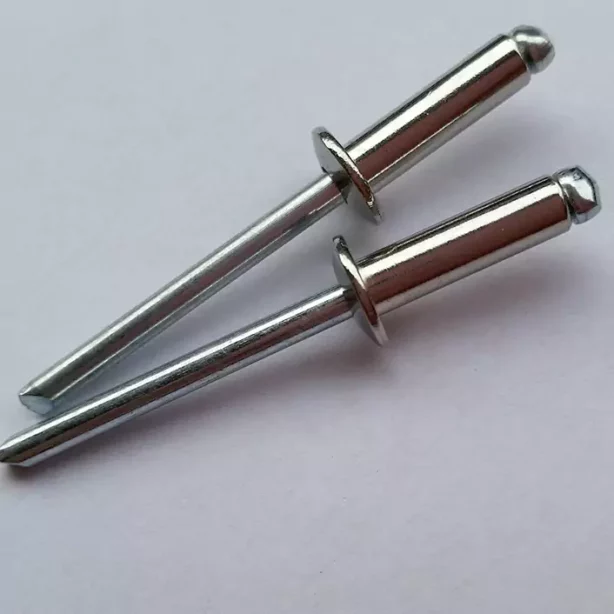
Stainless steel rivets are known for their strength, hardness, and ability to withstand wear, along with excellent corrosion resistance. In addition to this, stainless steel rivets offer hygienic properties, a strength-to-weight advantage, and good impact resistance. As a result, they are commonly used in aircraft, automotive, and rail transport applications.
Advantages of rivets
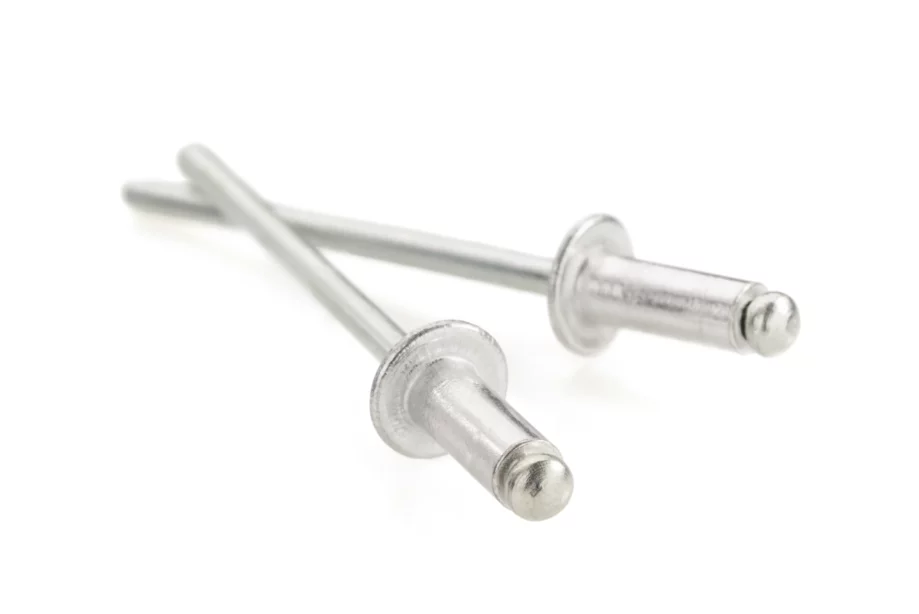
Rivets offer several advantages over other fastening methods such as welding, screws, and bolts. Some of these advantages include:
Strength and durability
Rivets provide a strong and durable fastening solution that can withstand high loads and forces.
Lightweight
Rivets are often lightweight and can be used in applications where weight is a critical factor, such as in aircraft and automotive manufacturing.
Resistance to vibration
Rivets are less prone to loosening due to vibration, making them a suitable choice for applications where vibration is a concern.
Lower cost
Compared to other fastening methods, such as welding, riveting is often a lower-cost option.
Aesthetically pleasing
Rivets can be an attractive fastening solution and can be used to enhance the visual appeal of a finished product.
Wide range of materials
Rivets can be made from a variety of materials, including aluminum, steel, brass, and copper, making them versatile and suitable for a range of applications.
Ease of installation
Rivets can be installed quickly and easily using basic tools, making them a convenient choice for many manufacturing applications.
Conclusion
In conclusion, CapableMachining said mechanical riveting is a popular and effective method for joining two or more materials together, most applicable in sheet metal fabrication. It involves the use of a rivet, which is a cylindrical fastener that is inserted through a hole in the materials to be joined and then expanded or deformed to secure the joint. Riveting offers several advantages over other joining methods, including high strength, durability, and resistance to vibration and impact. It is also relatively simple and cost-effective, requiring only basic tools and equipment.
However, riveting has some limitations, such as the need for access to both sides of the materials being joined and the potential for corrosion or fatigue over time. Despite these limitations, riveting remains a popular and reliable method for joining materials in a wide range of applications, from construction and manufacturing to aerospace and automotive industries.
3 Comments
Leave a Comment
You must be logged in to post a comment.
Your blog is a powerful force, leaving an indelible impact on those in pursuit of understanding.
Thanks for your appreciate.
I am not sure where you’re getting your info, but great topic.